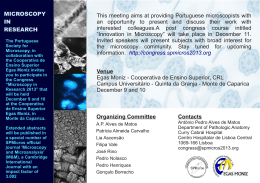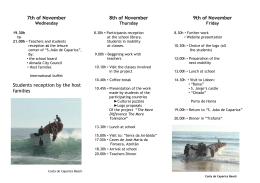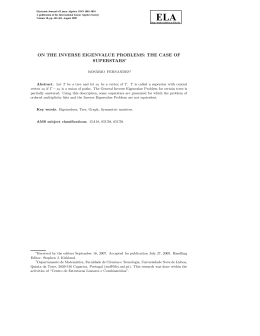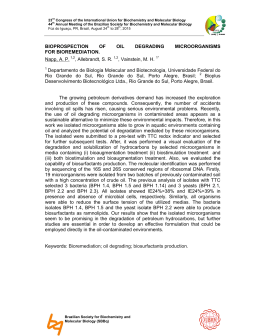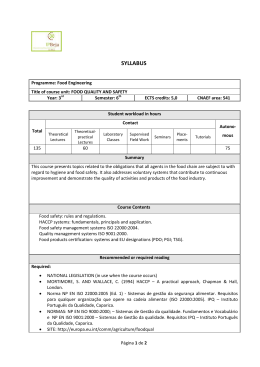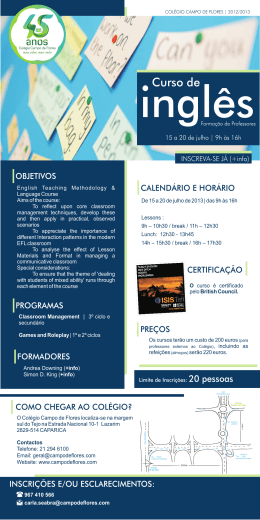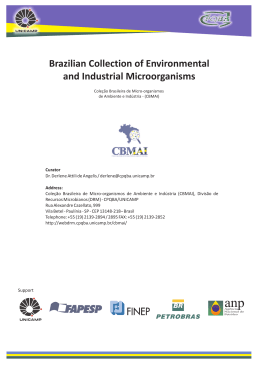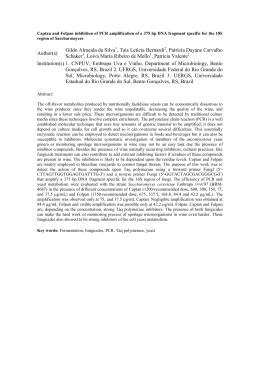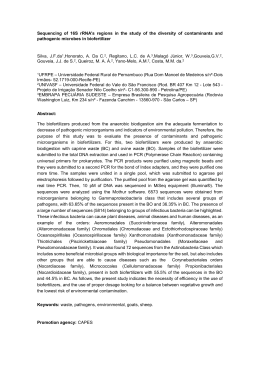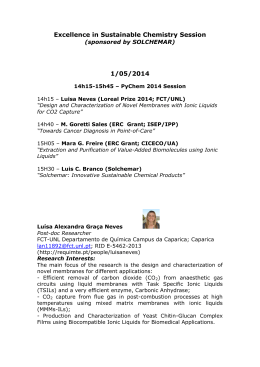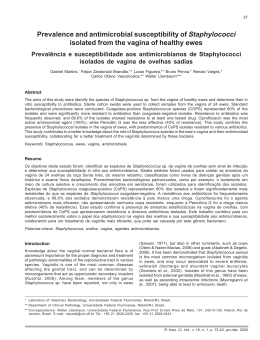Open air children playgrounds: the importance of microbial control of floor C. Matias1, A. Fernandes1, L. Proença1,2, A. Duarte3, H. Barroso1,2,4 1Instituto Superior de Ciências da Saúde Egas Moniz, Campus Universitário, Qta. Da Granja, Monte de Caparica, 2829-511 Caparica, 2CiiEM, Instituto Superior de Ciências da Saúde Egas Moniz, Campus Universitário, Qta. da Granja, Monte de Caparica, 2829-511 Caparica,3iMed.UL, Faculdade de Farmácia da ULisboa, Av das Forças Armadas, 1649-019 Lisboa; 4Laboratório de Microbiologia Aplicada Egas Moniz, Campus Universitário, Qta. da Granja, Monte de Caparica, 2829-511 Caparica Introduction Playgrounds are places of entertainment integrated in society, they serve the child population, and they are generally regarded as safe areas. However, dogs, birds and other animals share the environment and children could be exposed to a variety of microorganisms, some of them potentially pathogenic carrying antibiotic resistance. Materials and Methods Open air playgrouns During nine months, 30 playgrounds, located in grand area of Lisboa, were examined twice per month. The samples have been collected near the surface of playground toys and trees and consisted of pebble stone (5mm), synthetic floor and sand. The washing solutions of sand and pebble stone, and the solution where the swabs were immersed from synthetic floor were used to inoculate different culture media. Biochemical tests and antimicrobial susceptibility were determined among selected bacteria. Results The total amount of microorganisms were variable among the 30 playgrounds. Low contamination is directly related to the cleaning conditions, animal control of the facilities and social status of population. Climatic changes have a major impact on microbial flora: the increase on temperature and the reduction of rainfall resulted in a significant decrease in the quantity of microorganisms. The type of floor influenced the results: synthetic floor showed the higher number of isolates with antibiotic resistance. Staphylococcus aureus coagulase-positive was isolated with major incidence during winter time. Resistance to antibiotics used in clinical practice was detected in bacteria isolated from different playgrounds. Microorganisms isolated from samples of playgrounds’ floor that were identified. Acinetobacter baumannii/ calcoaceticus Aerococcus viridans Aeromonas hydrophila/caviae Butiauzella agrestis Brevundimonas vesicularis Citrobacter braakii Citrobacter freundi Citrobacter Koseri/ amalonaticus Chryseobacterium indologenes Citrobacter youngae Enterobacter Enterobacter amnigenus Enterobacter cloacae Enterobacter intermedius Enterococcus durans Enterococcus faecium E. coli Escherichia hermannii Escherichia vulneris Hafnia alvei Fungus Alternaria Aspergillus sp Aspergillus niger Candida albicans Fusarium Geotrichum Penicillium Mucor Bacteria Lactococcus lactis spp Micrococcus sp Pontea Pseudomonas Pseudomonas aeruginosa Pseudomonas putida Salmonella Salmonella choleraesuis ssp arizonae Serratia Ficaria Serratia odorífera Staphylococcus aureus Staphylococcus lentus Staphylococcus xylosus Klebsiella pneumoniae spp Klebsiella oxytoca Kluyvera spp Vibrio parahaemolyticus Vibrio vulnificus The microorganisms found are part of commensal flora from humans and animals, however normal flora bacteria can act as opportunistic pathogens at times of lowered immunity. It was worrisome the identification of Staphylococcus aureus meticilline resistant (MRSA ). The mecA gene was confirmed by PCR amplification. The cephalosporinase AmpC-type was identified among Escherichia coli and Citrobacter species. This β-lactamase conferred resistance to cephalosporins and was inhibited by cloxacillin At the end of the study, we analised samples collected after the hygiene and cleanliness of the playgrounds. The number of microorganisms lowered significantly, showing that this control is essencial, when repeated periodically, and performed by playground cleaning specialists. Conclusions The importance of microbiological control was demonstrated in our work, emphasizing the need for cleaning of playgrounds that could serve as the vehicle of transmission of pathogenic microorganisms Acknowledges To Areimar and to António Bagulho, playground cleaning specialist, for all the help in getting the samples.
Download

